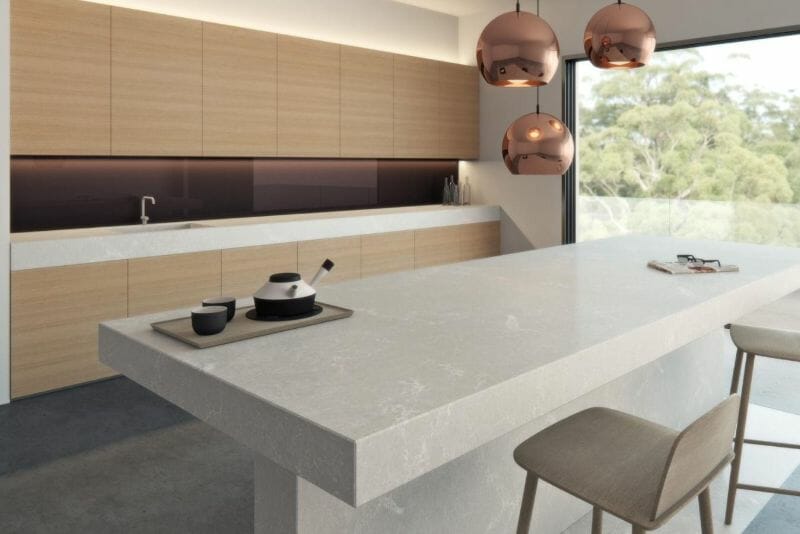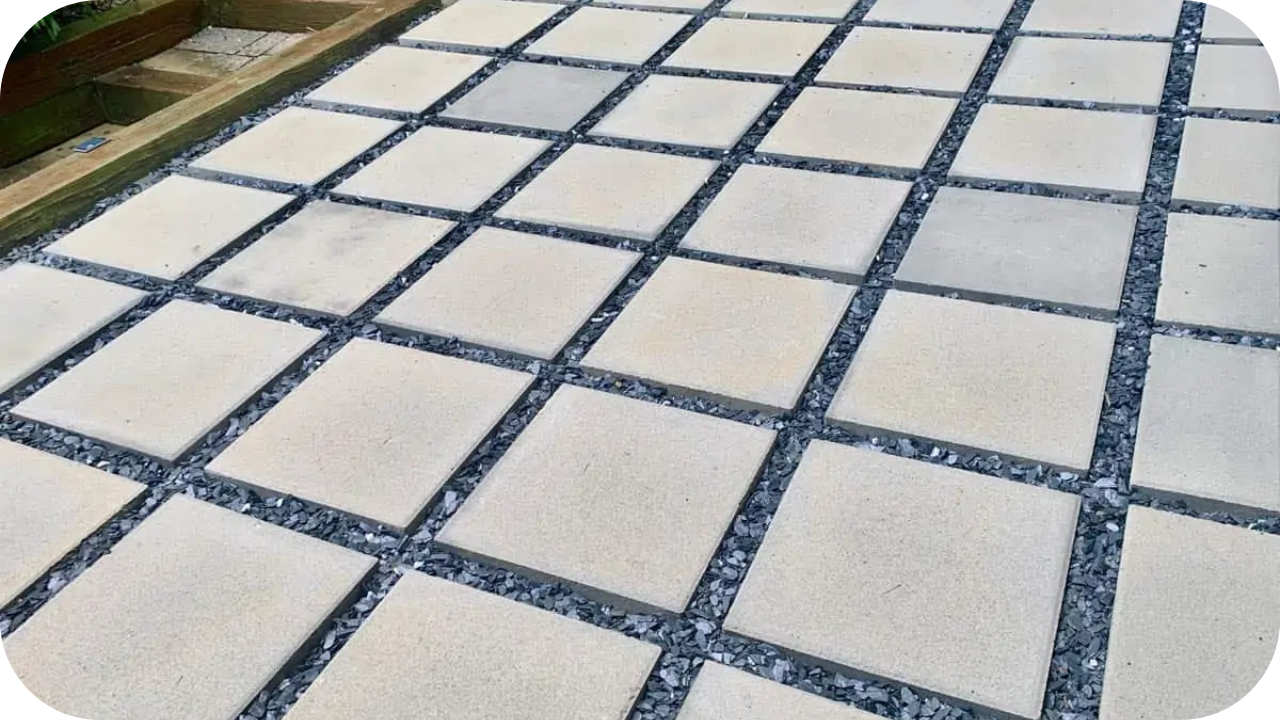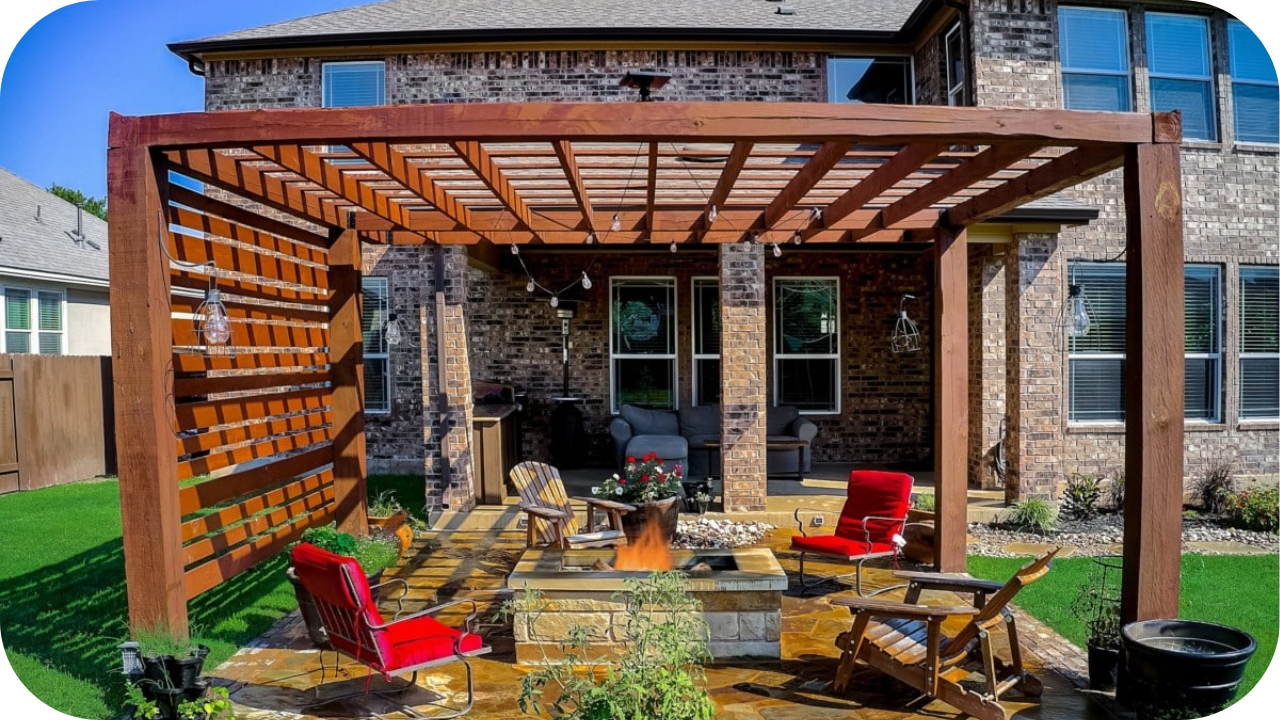
Choosing the right stone for your home can be overwhelming, especially with many options, such as granite and marble. Each has its pros and cons, making the decision even more challenging.
Many homeowners end up misled by marketing labels and choose stones that need to meet their expectations in terms of durability and maintenance. This often leads to costly replacements and dissatisfaction.
Understanding what quartzite truly is can save you from these pitfalls. Quartzite is a metamorphic rock that combines the beauty of marble with the hardness of granite, making it an excellent choice for various applications. Its durability, resistance to etching, and stunning natural patterns make it a top choice for countertops and other surfaces.
What is Quartzite?
Quartzite is a natural metamorphic rock formed from sandstone under intense heat and pressure. It is highly durable and resistant to heat and scratches. It features a range of colours and patterns, making it a popular choice for paving, flooring, and wall cladding in residential and commercial projects.
Characteristics of Quartzite
Quartzite is a highly durable metamorphic rock primarily composed of quartz. Its exceptional hardness, ranking 7 on the Mohs scale, makes it more resistant to scratches than granite and other natural stones.
This durability is due to the intense heat and pressure conditions during its formation, which fuse quartz grains into a dense, interlocking crystalline structure.
Quartzite is available in various colours, including white, grey, pink, red, green, and blue. Due to mineral impurities, it often has distinctive veining and streaks. This diverse colour palette enhances its aesthetic appeal, making it a popular flooring and wall cladding choice.
In addition to its aesthetic and physical properties, quartzite is also chemically resistant. It does not etch or stain from exposure to acidic substances like lemon juice or vinegar, making it an ideal material for kitchen countertops and other high-use areas.
Quartzite’s low porosity makes it highly resistant to water absorption and staining, especially when properly sealed. This characteristic, combined with its heat resistance, further underscores its suitability for indoor and outdoor applications.
Benefits of Using Quartzite
Discover why quartzite is becoming the go-to choice for homeowners and designers alike. From its unparalleled durability to its stunning natural beauty, quartzite offers a range of benefits that make it an exceptional material for various home applications.
Learn how this versatile, low-maintenance stone can elevate your space while providing long-lasting value and performance.
1. Durability
Quartzite is renowned for its exceptional durability. It is harder than granite and highly resistant to scratches, heat, and daily wear and tear, making it perfect for high-traffic areas such as kitchens and bathrooms. This robustness ensures that quartzite surfaces can withstand the rigours of everyday use without losing their integrity or appearance.
2. Aesthetic Appeal
One of the standout features of quartzite is its stunning aesthetic appeal. With unique veining and a wide array of colours, quartzite offers the luxurious look of marble without the high maintenance. Each slab is distinct, ensuring a unique and elegant addition to any home décor.
3. Low Maintenance
Maintaining quartzite is straightforward and hassle-free. Regular sealing helps prevent stains and retain its natural sheen, but daily cleaning requires only mild soap and water. This ease of maintenance makes quartzite a practical choice for busy households.
4. UV Resistance
Quartzite is resistant to UV rays, making it an excellent option for outdoor applications such as kitchen countertops and bar tops. This UV resistance ensures quartzite will not fade or degrade when exposed to direct sunlight.
5. Increased Property Value
Installing quartzite can significantly enhance your property’s value. Its durability, low maintenance, and luxurious appearance make it a highly desirable feature for potential buyers, providing a solid return on investment.
5. Heat Resistance
Quartzite’s natural resistance to heat makes it ideal for kitchen countertops, where hot pots and pans are frequently used. Quartzite can withstand high temperatures without damage, unlike other materials, although using trivets is still recommended for added protection.
6. Versatility
Quartzite’s versatility in design is another significant benefit. It comes in various colours and patterns, making it suitable for different design styles, from modern to rustic. This adaptability allows quartzite to be used in multiple applications, including countertops, flooring, and accent walls.
7. Scratch Resistance
In addition to its overall durability, quartzite is highly resistant to scratches. This makes it an excellent choice for kitchen surfaces, where sharp objects are often used. While it is recommended to use cutting boards to preserve the surface and the sharpness of knives, quartzite’s scratch resistance ensures long-lasting beauty and functionality.
Common Uses of Quartzite
Quartzite is a versatile natural stone with a range of applications both indoors and outdoors, owing to its durability, aesthetic appeal, and resistance to heat and abrasion.
1. Flooring and Wall Cladding
Quartzite is also widely used for flooring and wall cladding. Its natural beauty and wide range of colours and patterns add an elegant touch to any interior or exterior space. The stone’s toughness suits high-traffic areas and outdoor applications, ensuring long-lasting beauty and performance.
2. Construction and Landscaping
In the construction industry, quartzite is used as a durable aggregate for road building and as a decorative stone in landscaping projects. It is ideal for garden pathways, retaining walls, and other outdoor features due to its resistance to weathering and abrasion.
3. Decorative Elements and Fireplaces
Quartzite’s unique patterns and colours make it popular for decorative elements such as fireplace surrounds and accent walls. Its ability to withstand high temperatures further enhances its suitability for these applications, providing both aesthetic appeal and functional benefits.
4. Kitchen and Bathroom Countertops
One of the most popular uses of quartzite is for kitchen and bathroom countertops. Its durability and resistance to heat make it an ideal material for these high-use areas.
Quartzite countertops offer a luxurious, marble-like appearance with greater strength and less maintenance, making them a top choice for homeowners looking to combine beauty and functionality.
Comparing Quartzite to Other Stones
Quartzite’s unique blend of characteristics sets it apart from other natural stones. Unlike marble, it offers similar luxurious veining and colour variations but surpasses marble in durability.
Quartzite is harder and less porous than marble, making it more resistant to scratches, heat, and staining. This makes quartzite preferable for paving, walling and high-traffic areas where durability is paramount.
Compared to granite, quartzite shares similar durability but often exhibits more vibrant colours and intricate patterns due to its metamorphic origin. While both stones are heat-resistant and suitable for various applications, quartzite offers a broader range of aesthetic options.
In contrast to quartz (engineered stone), which is manufactured using quartz crystals and resin, quartzite is entirely natural. Thanks to its natural resistance to staining and etching, it does not require sealing like quartz.
How to Care for Quartzite
Prized for its durability and beauty, Quartzite demands careful maintenance to preserve its elegance. From daily cleaning to strategic sealing, these essential tips ensure your quartzite surfaces remain resilient and stunning in Flooring or outdoor spaces.
- Regular Cleaning: Clean quartzite surfaces regularly with a mild soap and water solution, wiping away dust, dirt, and spills promptly to prevent staining.
- Avoid Harsh Cleaners: Refrain from using acidic or abrasive cleaners, which can damage the surface and affect its natural lustre over time.
- Sealing: Although some varieties may be naturally less porous, consider sealing quartzite to enhance its resistance to staining. Seek advice from your supplier or installer for the best sealing options.
- Use Coasters and Wipe Spills: Protect quartzite surfaces from potential etching by using coasters under glasses, particularly those containing citrus juices or alcohol. Quickly wipe spills to prevent absorption and staining.
- Daily Maintenance: Use a soft cloth or sponge for daily cleaning to avoid scratching the surface. Avoid abrasive pads or cleaners that can dull their finish.
- Reseal as Needed: Regularly check and reseal quartzite surfaces as recommended to maintain their protective layer and preserve their durability and natural beauty over time.
Conclusion
Quartzite’s unmatched durability and aesthetic versatility make it a standout choice for modern construction and design. Its resilience against wear and tear and natural beauty ensures lasting appeal in any space.
Explore quartzite options today to elevate your next architectural or interior design project with enduring elegance and practicality.
More To Explore

Top Outdoor Paving Ideas for Aussie Backyards
Are you ready to transform your Aussie backyard with stunning paving ideas? Whether you’re looking to create a stylish outdoor entertaining area, a functional pathway,

Small Backyard? Here’s How to Maximise with Stone
Struggling to make the most of your small backyard space? Many homeowners with limited outdoor areas feel restricted when it comes to design. But what


